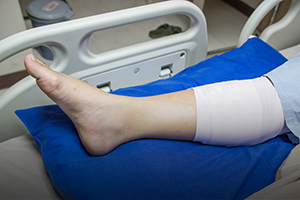Infection-Detecting Bandage
 Dangerous bacterial infections are a relatively common complication of wound healing that not only compromises patient health but is also costly to treat. As a result, antibiotics are often over-prescribed, which contributes to the never-ending circle of drug-resistant bacteria and the need for more potent antibiotics down the line. To help combat this issue, researchers have developed a new type of dressing that turns fluorescent green when exposed to levels of bacteria that commonly cause wound infections.
Dangerous bacterial infections are a relatively common complication of wound healing that not only compromises patient health but is also costly to treat. As a result, antibiotics are often over-prescribed, which contributes to the never-ending circle of drug-resistant bacteria and the need for more potent antibiotics down the line. To help combat this issue, researchers have developed a new type of dressing that turns fluorescent green when exposed to levels of bacteria that commonly cause wound infections.
While bacteria are present in all wounds, they are often cleared by the immune system before the population reaches harmful levels. In some cases, however, the infection can grow out of control, requiring intervention. According to the researchers, this transition may occur several hours before the onset of clinical symptoms, and is likely associated with the formation of a biofilm layer containing microbes that prevent the immune system from fighting off the bacteria.
The new dressing is designed to react to the toxins released by this biofilm layer. Tiny capsules containing dye mimic typical cell membranes. When the toxins puncture these membranes (as they do cells in the body) the capsules release their dye into a gel which causes it to glow, providing an early warning of potentially life-threatening infection. Earlier warning means earlier intervention, which is generally easier and more effective.
Although the new “smart” bandage has yet to be tested on humans, experiments using sample swabs from wounds and blisters indicate that the dressing is specific to pathogenic bacteria, but does not respond to biofilms of non-pathogenic species, and so will not produce false positive results. Clinical testing is expected to begin in 2018.